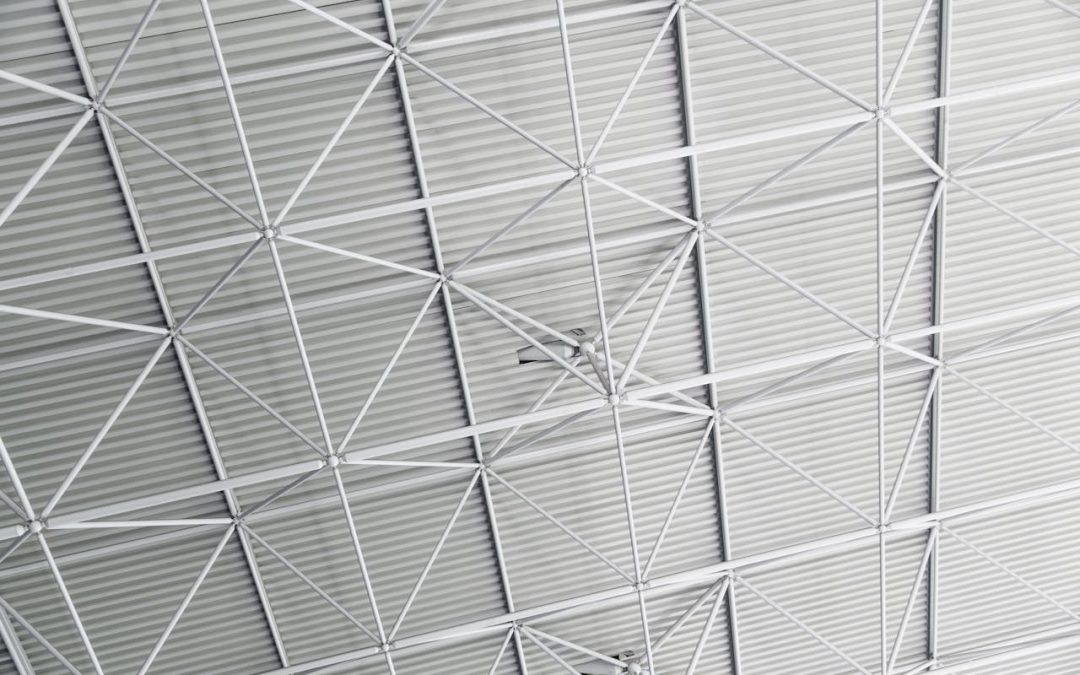Commercial buildings need roofs that are not only durable but also energy-efficient. Energy-efficient metal roofing solutions can help reduce utility costs and improve the overall comfort of your building. These roofs reflect sunlight and reduce the amount of heat absorbed, making your HVAC systems work less to maintain a comfortable indoor temperature.
Choosing the right materials for your commercial metal roof is crucial for maximizing energy efficiency. Different types of metal and coatings offer varying benefits. Knowing which material best suits your needs helps you make an informed decision that enhances energy savings and extends the lifespan of your roof.
Installation techniques also play a significant role in the efficiency of your metal roofing. Proper installation ensures that your roof performs at its best and provides maximum energy savings. Additionally, regular maintenance helps keep your roof in top shape, ensuring it continues to deliver energy-efficient benefits for years to come.
Understanding the benefits, materials, installation techniques, and maintenance needs for energy-efficient metal roofing can make a big difference for your commercial building. The following sections will explore these topics in detail, helping you optimize your roofing solution for better energy efficiency and cost savings.
Benefits of Energy-Efficient Metal Roofing for Commercial Buildings
Energy-efficient metal roofing provides many advantages for commercial buildings. One key benefit is cost savings. These roofs reflect sunlight, reducing the heat that enters the building. This means less energy is needed to cool the interior, which can lead to lower utility bills. Over time, these savings can be substantial, making energy-efficient metal roofing a smart investment for businesses.
Another benefit is improved indoor comfort. By keeping heat out during the summer and retaining warmth during the winter, energy-efficient metal roofs help maintain a consistent indoor temperature. This can make the working environment more comfortable for employees and visitors alike. Consistent temperatures also reduce the strain on HVAC systems, further extending their lifespan and reducing maintenance costs.
Energy-efficient metal roofs are also environmentally friendly. Because they improve energy efficiency, they help reduce the overall carbon footprint of a building. Many metal roofing materials are also made from recycled content and are fully recyclable at the end of their lifespan. This makes them a sustainable choice for businesses looking to reduce their environmental impact.
Types of Energy-Efficient Metal Roofing Materials
Choosing the right material for your energy-efficient metal roof is crucial. Different materials offer various benefits, and understanding these can help you make the best choice for your building.
1. Cool Metal Roofing: These roofs are coated with special reflective paint that reflects more sunlight and absorbs less heat. This type of metal roof can reduce cooling energy costs by up to 15%.
2. Standing Seam Metal Roofs: These roofs have raised seams that snap together, making them highly resistant to weather and leaks. They are also very durable and can last up to 50 years with proper care, making them an excellent long-term investment.
3. Metal Shingles: These mimic the appearance of traditional shingles but offer better durability and energy efficiency. Metal shingles can be coated with reflective paints to improve their energy-saving properties.
4. Stone-Coated Metal Roofing: These roofs combine the durability of metal with the traditional look of shingles or tiles. The added stone layer increases durability and provides additional insulation, improving the roof’s overall energy efficiency.
Understanding the different types of energy-efficient metal roofing materials will help you select the best option for your commercial building. Each type offers unique benefits, allowing you to choose the material that best meets your energy-saving goals and aesthetic preferences.
Installation Techniques for Maximizing Energy Efficiency
Proper installation techniques are vital for maximizing the energy efficiency of your metal roof. One of the most important techniques is the use of reflective coatings. These coatings help reflect more sunlight, reducing the amount of heat absorbed by your roof. Properly applied coatings can significantly lower cooling costs and improve the overall performance of your roofing system.
Another key technique is ensuring proper insulation. Quality insulation plays a crucial role in preventing heat transfer between the interior and exterior of your building. Installing a radiant barrier, which reflects heat instead of absorbing it, can further enhance the energy efficiency of your metal roof. This adds an extra layer of protection against temperature extremes, helping to maintain a consistent indoor environment.
Ventilation is also critical. Adequate roof ventilation helps remove trapped hot air, reducing cooling loads and prolonging the life of your roof. Installing ridge vents, soffit vents, or turbine vents can enhance airflow, improving the energy efficiency of your building. These techniques, combined with skilled installation, ensure your metal roof provides maximum energy savings.
Maintenance Tips for Long-Lasting Energy Efficiency
Maintaining your energy-efficient metal roof is essential for long-lasting performance. Regular inspections are the first step. Check your roof at least twice a year for any signs of damage, such as rust spots, loose panels, or worn-out coatings. Addressing small issues promptly prevents them from becoming bigger problems, ensuring your roof remains energy-efficient.
Cleaning your roof is also important. Remove debris like leaves, branches, and dirt that can trap moisture and cause corrosion. Keeping gutters and downspouts clean ensures proper drainage and prevents water from accumulating on your roof. A clean roof surface optimizes its reflective properties, thus maintaining its energy efficiency.
Reapplying reflective coatings every few years helps maintain their effectiveness. Over time, weather and UV exposure can degrade these coatings, reducing their reflective properties. Regular reapplication ensures your roof continues to provide energy savings. Additionally, make sure to check and replace any damaged insulation or ventilation components to keep your roof functioning at its best.
Conclusion
Energy-efficient metal roofing offers significant benefits for commercial buildings, from cost savings to improved comfort and environmental sustainability. By choosing the right materials, employing skilled installation techniques, and maintaining your roof properly, you can maximize these benefits and ensure your roof provides long-lasting performance.
For expert guidance and reliable service, turn to Mike Huddleston Roofing Systems. Our team specializes in energy-efficient commercial roofing solutions tailored to meet your specific needs. Contact us today to learn how we can help you enhance your building’s energy efficiency and protect your investment for years to come!

